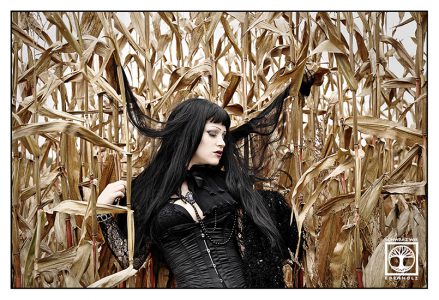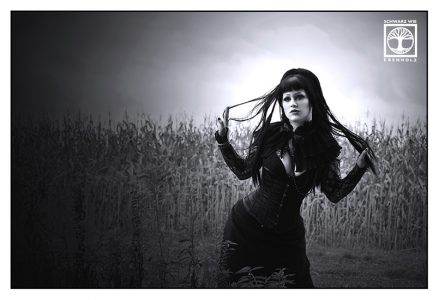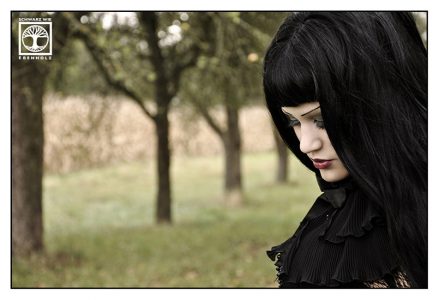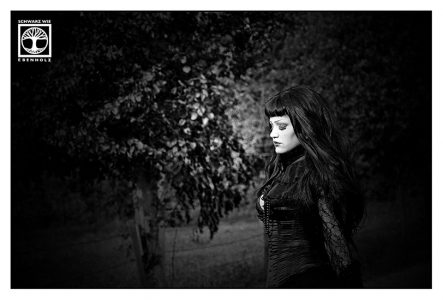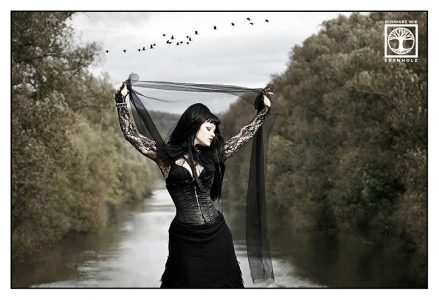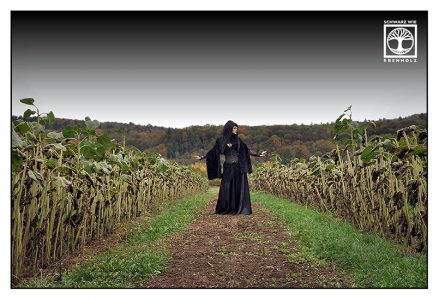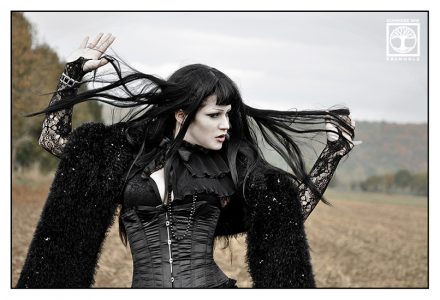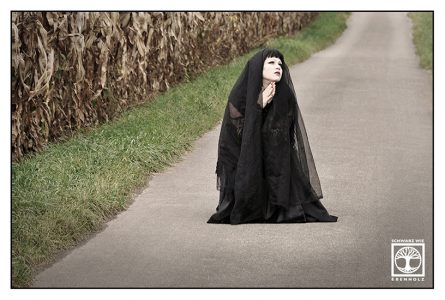The Witch’s Spell: A Gothic Fairytale
Contrary to those happy and colorful shooting projects I often do with girls, I wanted to create something dark and gloomy this time. While watching the music video to the song “Frozen” by Madonna, I got the idea of combining Goth lifestyle with the tale of a witch initiating the season’s fall. That’s why I waited for autumn and looked for places where you see the world withering away because of “the witch’s spell”: Dying flowers, trees, corn fields, etc.
But why did I put my model in Goth clothes? Why a witch initiating fall? Practice members of Goth subculture black magic? Are they responsible for winter? What is the meaning of all of this? Read on!
Public Misunderstandings
Because of public misunderstanding surrounding gothic aesthetics, members of goth subculture often suffer prejudice, discrimination, and intolerance. Black is the prevailing color, combined with a pale complexion, reminding other people of death and evil. Badly-informed outsiders develop prejudices because they don’t get to know Goth people. They get stuck in their ignorance in the same way they do with other cultures. Only that in this case, it’s a subculture: the strangers inside one’s own culture.
So “normal” people get scared and as a reaction, they feel insecure or even insult Goths by shouting stupid things like “Sataaan!” or attack them as happened in 2008 in England (Sophie Lancaster died because of prejudices). This is an unforgiving act against completely harmless people. Before uttering nonsense or committing hate crimes, you should gather all your courage and start talking to some of its members. Maybe you even find yourself liking some of them. Or at least, read this blog about Goths and this special photo shooting. This is a step into the right direction!
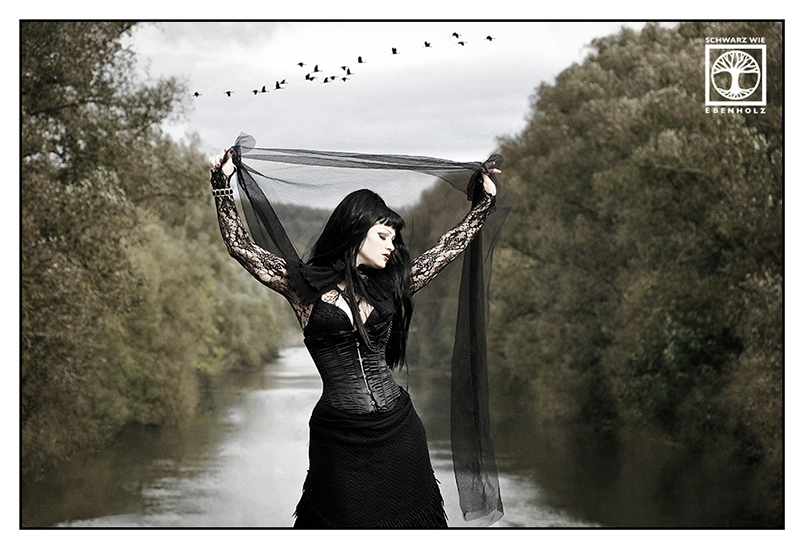
A short History of the Dark Culture
The Goth subculture began in England during the early 1980s where it was developed from the gothic rock scene, itself an offshoot of the post-punk genre. It continues to exist in the 2010s. In Western Europe, there are large annual festivals, mainly in Germany, including Wave-Gotik-Treffen in Leipzig and M’era Luna in Hildesheim.
Since the 1980s, a lot of splinter groups have developed: the dark wave culture, the electro subculture and parts of the neofolk and post-industrial subculture.
They all call themselves “The Dark culture” (German: Schwarze Szene). In this context, “culture” is not to be understood as closed subculture, but as social environment, a milieu, which comprises people with similar interests and preferences.
As you can see, a whole variety of music genres and styles belong to it. Black as a “color” is predominant. But there are also very colorful community members, mainly those listening to Dark Wave and Industrial, the so-called Cyber Goths. Furthermore, there are those who prefer velvet and romantic lace; those wearing Mohawk hairstyle like a punk; those wearing Victorian dresses, medieval costumes and so on. Some are more of a Goth than others and you can argue wether you count certain groups in or not, but you can meet all of them on those Goth festivals I told you before.
It’s not possible to define the Dark Culture perfectly, so I will stop now.
I just wanted to give you an idea about the underground scene and one proverb to think about: Don’t judge a book by its cover – and no person by his or her appearance!
© Madonna (Warner Bros Records) – She is not a Goth, she is just dressed as one. The video to “Frozen” inspired me to do this photo shooting.
About tolerance in the Goth subculture
Goths are usually quite open-minded. They don’t care about cultures, gender roles or sexual preferences (as long as no one gets harmed against his or her will). While “normal” men might stare at Goth girls lustfully because they wear fish net stockings and mini skirts, such a thing will never happen in a Goth club. Because women in this subculture may openly live their sexuality, they are stronger and more self-confident than women in the outside world. For Goth men, the way they dress is perfectly normal. There is nothing slutty about it. You don’t have to fulfill gender clichés. This means you don’t have to be a perfect woman or a strong man. It is even ok to be somewhere in between! Girlish boys, boyish girls, homosexuals and transgender people are welcome. No one cares about their sexuality.
Yet, there are some things Goths are intolerant against:
- Common people are seen as conservative, consumption-oriented, intolerant and egocentric. Unfortunately, this indeed applies to a lot of people… Be honest!
- Being a Goth implies much more than shared musical tastes. It is an “aesthetic”, a particular way of seeing and of being seen. So you can’t just wear something black and be fully accepted – you have to do it right! Goths tolerate poseurs but talk about them. On one end of the spectrum is the “Uber goth” who is seeking a pallor so much that he or she applies as much white foundation and white powder as possible. This is too much! On the other end of the spectrum, there are “goth wannabes”, usually young kids going through a goth phase who do not know much about the goth subculture or its music but want to be part of the goth crowd. If you put pin-back buttons on your bag with band logos like Marilyn Manson, HIM or Blutengel, they all know you’re a raw recruit! ( = you don’t know anything)
Prejudice 1: “Goths practice Satanism”
It’s funny that society believes Goths pray to Satan because it’s simply not true.
Being a goth is about music, clothes and lifestyle – but certainly NOT ABOUT RELIGION!!!
Most Goths distance themselves clearly from satanism. In fact, they tend to deny any kind of religion and prefer being atheists. Yet, Goths are often interested in learning about different philosophies. So it may happen that some of them browse in a Satanic bible in order to know what it’s all about. But there’s certainly no need to believe in it!
(You already know: Knowing about stuff is better than assuming things!)
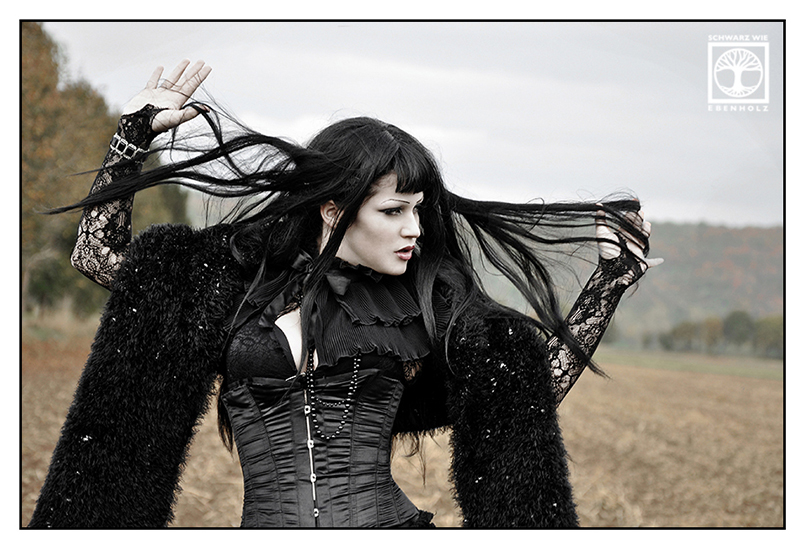
Some members of the Goth subculture take a great interest in modern paganism or occultism because they are interested in mythic and mysterious things. A small part of the scene is even Christian. There is a “Gothic church service” during the “Wave-Gotik-Treffen” in Leipzig every year. In a Christian church.
Prejudice 2: “Goths embrace Death”
Goths may look dead but they don’t want to be dead. They certainly prefer to live!
But in contrast to other people, death is no taboo. Sadness and grief neither.
They think about it, they talk about it and sometimes they even write about it.
A Goth is someone who sees beauty in the dark side of life. Today’s society often denies darkness because it is associated with evil. The good guy in the movie is mostly blond and white. His protagonist however has brown or black hair and a dark complexion (or is a nazi or from Russia). Dark is evil and has to be destroyed for the good’s sake. But reality is not that simple…
There is not only life, love and joy. There is also death, loss and sadness.
They are opposite sides of the same coin.
While most people try to forget those negative aspects of life, Goths embrace ALL of it. They understand that you can’t be happy 24/7; and they don’t believe it is necessary to pretend to be so. Goths understand: There is no true happiness without sadness, no life without death.
The witch in my photo shooting brings death to nature. But death is only a temporary state. After fall, there will be winter. After winter, there will be spring and everything will flourish again. There’s no life without death. And no death without life.
A tribute to the Goth subculture – a very inspiring place to be.
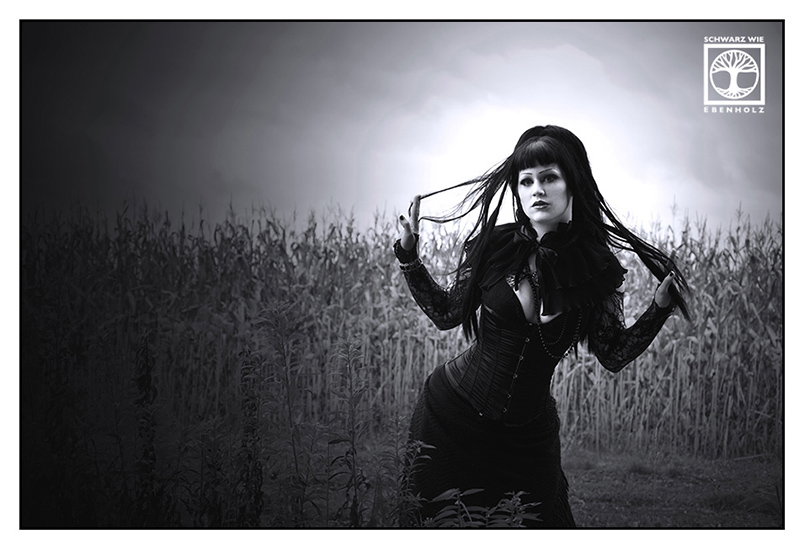
 Do you like what you see on the photos?
Do you like what you see on the photos?
Do you think I presented the Goth subculture well or do you think I should add some points to the article? Please leave your comment!
